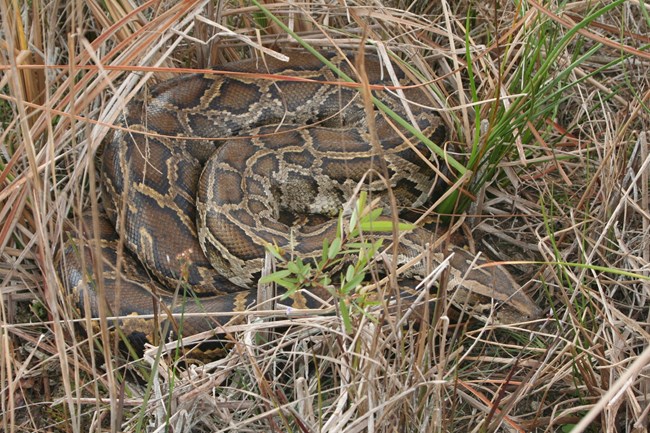
Our nation’s national parks are managed to preserve unimpaired America’s natural and cultural resources. This mission is under a deep and immediate threat as a consequence of invasive animal species.
- Feral swine dig up at-risk plants, damage mound sites, and increase erosion at numerous national parks across the U.S. and in the Pacific Islands.
- Burmese pythons have devastated populations of mammals in Everglades National Park.
- Red imported fire ants pose a threat to sea turtles along the Gulf Coast.
- Aedes mosquitoes bring new diseases that can be transmitted to people, including Zika virus and dengue fever.
- In western states, American bullfrogs prey on and out-compete native frog species, such as the federally threatened California red-legged frog.
Despite these challenges, there are bright spots where parks are managing invasive species challenges, as well as opportunities for the National Park Service to take a lead in addressing the threat.
- Some Hawai’ian parks and Pinnacles National Park in California have used fencing to successfully exclude feral swine and other invasive ungulates from sensitive areas.
- Hawai’ian parks set up a rigorous inspection program that prevented the introduction of little fire ants into their parks, thus avoiding a fate similar to those parks along the Gulf Coast.
- Yosemite National Park has eradicated American bullfrogs from their waters, helping re-establish the natural ecosystem that previously existed there.
Successfully maintaining America's treasures - the national parks - requires coordinated and innovative action to manage invasive animal species.
Invasive Animals in Parks
Last updated: August 21, 2025
